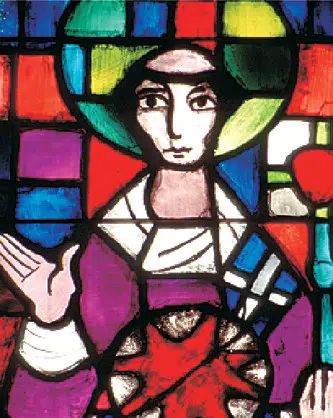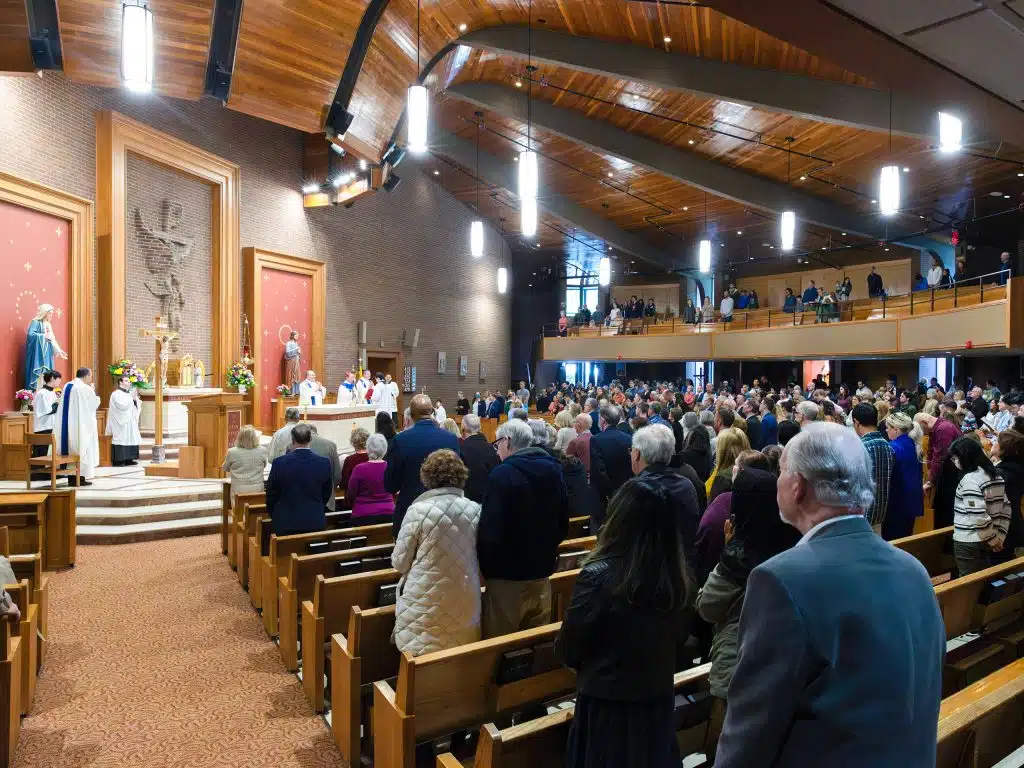St. Lawrence (died 258)
Feast day: August 10
In 258, Emperor Valerian began a fresh round of anti-Christian persecution. Just days after the emperor had published his edict outlawing Christianity, a troop of Roman soldiers raided the catacomb of Praetextatus on the Appian Way, arresting Pope St. Sixtus II who had just finished celebrating Mass. When the soldiers burst in, they found the pope seated on a chair, surrounded by his seven deacons and subdeacons, as he taught the Catholic faith to his congregation. The Romans arrested Sixtus along with the deacons Felicissimus and Agapitus, and the subdeacons Januarius, Magnus, Vincent and Stephen. But for some inexplicable reason they did not take the deacon Lawrence. As the troops led their prisoners away, Lawrence, in tears, clutched at Sixtus’ robes and said, “Where are you going, priest, without your deacon? Where are you going, father, without your son?” Sixtus comforted Lawrence, saying that in a few days they would be reunited.
While the soldiers led their prisoners off to trial and execution, Lawrence hurried back to Rome. Fearful that the Romans would confiscate the church’s sacred vessels, Lawrence sold them and distributed the proceeds to the poor. He had barely finished when he received his own summons to appear before the prefect of the city.
By now, Sixtus and his companions were already dead, but the prefect promised to spare Lawrence’s life if he surrendered to the state the treasures of the church. Lawrence agreed, and the prefect gave him three days to collect the valuables and bring them to the tribunal.
Three days later, Lawrence returned to court with a large crowd of the poor, the blind, the lame and the helpless. “These,” he told the prefect, “are the treasures of the church.” The deacon’s ruse put the prefect in a foul mood, and what happened next explains how St. Lawrence became the patron of cooks, chefs, restaurateurs and anyone else who works in a kitchen. The prefect called for a large gridiron, commanded his executioners to build a slow fire beneath it, then had Lawrence stripped naked and bound to the grill. Just before he died, St. Lawrence called to his executioners and said, “Turn me over. I’m done on this side.”
The body of St. Lawrence was buried in the catacomb of Cyriaca outside the walls of Rome. Sometime before 335, in recognition of St. Lawrence’s popularity among Roman Christians, Emperor Constantine (Rome’s first Christian emperor) commissioned a basilica to be built over the martyr’s grave. The martyr’s tomb can be seen today protected by an iron grating in the crypt beneath the high altar of the Basilica of St. Lawrence Outside the Walls. The grill on which the saint was martyred is preserved beneath the high altar in Rome’s Church of St. Lawrence in Lucina.
Craughwell is the author of This Saint Will Change Your Life (Quirk, 2011) and Saints Behaving Badly (Doubleday, 2006).



The Good Shepherd